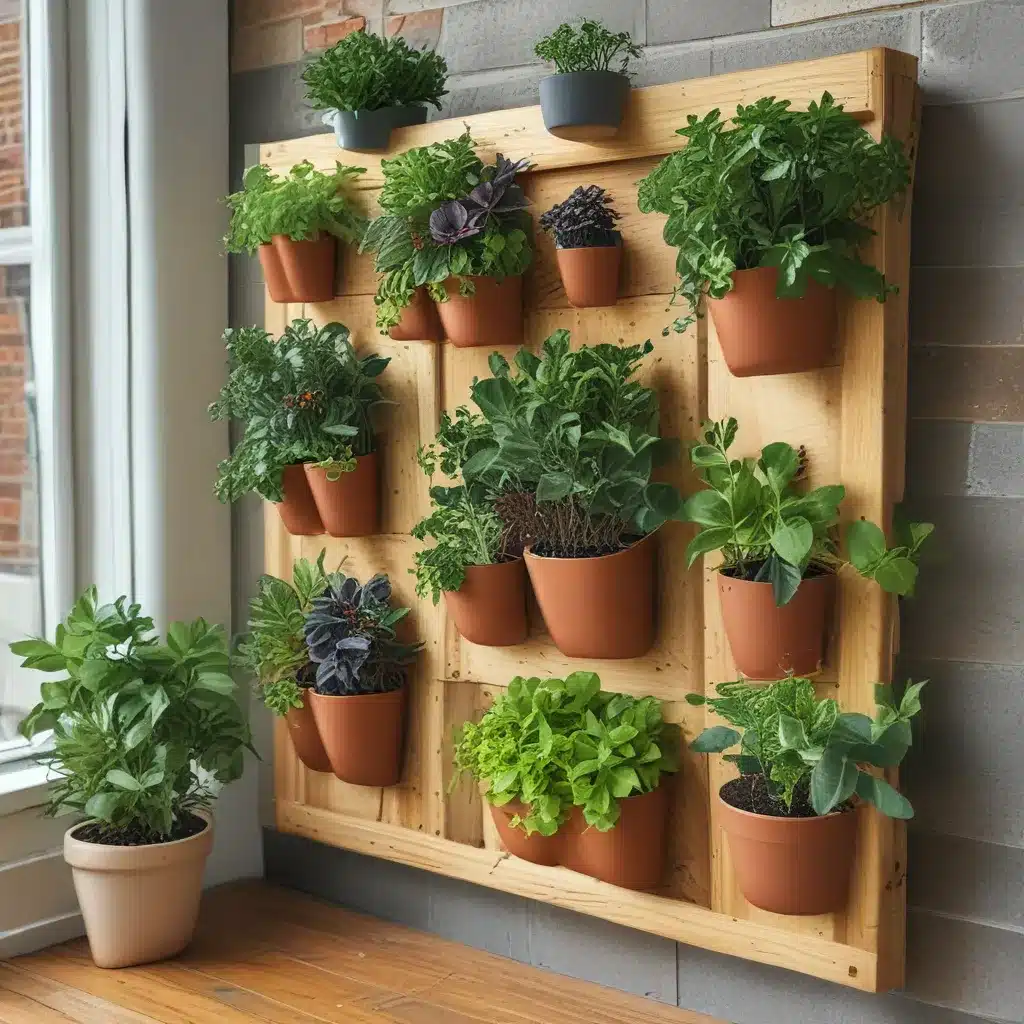
As a self-proclaimed “vertical gardening enthusiast,” I’m here to share my secrets for squeezing the most out of your small grow space. Picture this: a lush, thriving garden in the tiniest of backyards or on the most cramped balcony. It may sound too good to be true, but with the right techniques, it’s 100% possible.
The Power of Vertical Gardening
I’ll never forget the day I discovered the life-changing magic of vertical gardening. I had just moved into a cozy little apartment with a postage stamp-sized patio, and my dreams of a bountiful vegetable garden seemed absolutely crushed. That is, until I stumbled upon the Greenstalk vertical planter.
This ingenious system allowed me to grow up instead of out, packing a whopping 30 plants into just 2 square feet of space. I’m talking tomatoes, peppers, herbs, flowers – you name it! I was able to harvest fresh, homegrown produce just steps from my kitchen without taking up precious patio real estate.
And the best part? Vertical gardening is not only space-saving, but it can also increase your overall yield. According to Veggums, vertical gardens can produce more fruits, veggies, and herbs in a smaller footprint. They also reduce water usage by up to 90% and provide better airflow to minimize pests and diseases. Talk about a gardening game-changer!
Choosing the Right Plants
Of course, not all plants are created equal when it comes to vertical gardening. You’ll want to steer clear of sprawling, space-hogging varieties like pumpkins, melons, and zucchini. Instead, focus on more compact options that thrive in tight quarters.
Some of my personal favorites include:
– Cherry tomatoes
– Pole beans
– Cucumbers
– Herbs (basil, rosemary, thyme)
– Lettuces and greens
– Strawberries
And don’t forget about the power of “vining” plants that can be trained to grow up trellises or other vertical supports. Think peas, beans, and even some tomato varieties. These not only save precious ground space but also add a really beautiful, whimsical element to your garden.
Maximizing Every Inch
Now, let’s talk layout. When you’re working with a small footprint, every square inch counts. That’s why I’m a big proponent of intensive planting techniques, where you cram plants in closer together than you would in a traditional in-ground garden.
Another game-changing method? Raised garden beds. By elevating your planting area, you can improve drainage, warm the soil faster, and pack more plants into the same amount of space. And the best part? No bending or kneeling required, making gardening much more accessible.
But perhaps my favorite space-saving trick is vertical gardening systems like the Greenstalk. These ingenious setups allow you to stack multiple tiers of plants on top of each other, creating a lush, vibrant “vertical garden” that’s both beautiful and highly productive.
Caring for Your Vertical Garden
Of course, with great vertical garden comes great responsibility. But don’t worry, these gardens are actually remarkably low-maintenance – especially with the help of a few key gadgets and gizmos.
For starters, the Greenstalk’s patented watering system delivers water evenly to each tier, so you don’t have to worry about thirsty plants or waterlogged roots. Just fill the reservoir at the top, and the self-watering magic happens.
And when it comes to fertilizing, you can simply mix in some compost or slow-release granules when planting, then give your garden an occasional dose of water-soluble food through the watering system. Easy peasy!
Pest and disease management is a breeze, too. The increased airflow and drainage in vertical gardens can actually reduce the risk of many common issues. And if you do spot any unwanted critters or wilting leaves, a quick inspection and removal is all it takes to nip the problem in the bud.
Extending the Season
One of the coolest things about vertical gardening is its year-round potential. With the right planning and a few simple hacks, you can keep harvesting fresh produce well into the cooler months.
For starters, try growing cold-hardy crops like kale, Brussels sprouts, and root veggies in the fall and winter. Then, use a frost cover or even move your vertical garden indoors to protect your plants from the elements.
And let’s not forget the power of LED grow lights. By supplementing your vertical garden with some strategically placed indoor lighting, you can trick your plants into thinking it’s summertime – even when it’s freezing outside. Talk about a game-changer for extending the growing season!
Putting It All Together
Ready to dive into the wonderful world of vertical gardening? Here’s a quick recap of my top tips for maximizing your small-space yields:
- Choose compact, high-yielding plant varieties that thrive in tight quarters.
- Utilize vertical structures like trellises, raised beds, and stackable planters to make the most of your footprint.
- Implement intensive planting techniques for a super-productive garden.
- Take advantage of self-watering and automated systems to keep your vertical garden healthy with minimal effort.
- Extend your growing season by using frost covers, grow lights, and cold-hardy crops.
With a little creativity and a whole lot of vertical space, even the smallest of gardens can become a veritable oasis of fresh, homegrown goodness. So what are you waiting for? Head on over to Thornappple CSA and start planning your vertical gardening masterpiece today!



